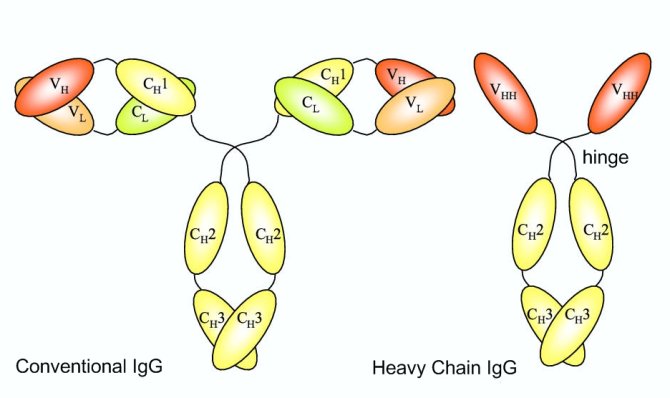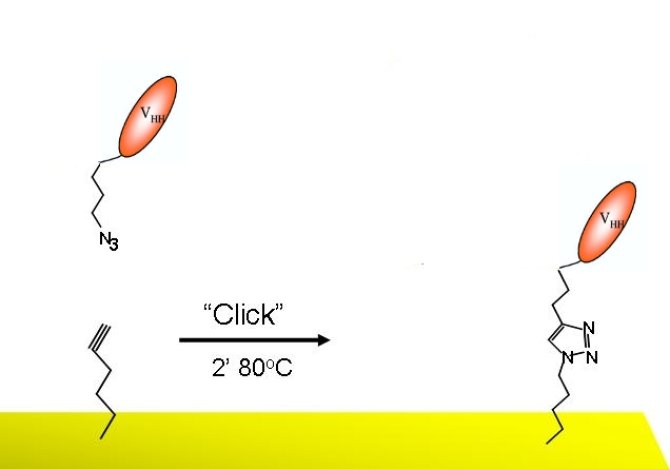
Development of technologies to organize antibodies on surfaces
Introduction:
New generations of biosensors that can be used by everyone and provide easy to interpret results in a short time by a low cost will be a breakthrough in medical and commercial diagnostic. The trend in this field goes to more and more compact and smaller sensors. Future sensors will have active areas of only 130 nm diameter (new generation NXP chips), which will only allow the deposition of a limited number of antibodies (15 nm diameter) per active element. Therefore a technique is highly desirable that enables the fast and specific binding of the antibodies in an ordered pattern on an adequate surface.
Goal:
One of the paramount challenges of the new technology is therefore to achieve the right orientation of the antibody to obtain the maximal possible binding capability for this purpose. To guaranty the desired antibody attachment on the surface it should be controlled with respect to chemical selectivity. In other words the technology should allow the control about which functional groups of the antibody take part in the immobilization.
Another important obstacle is the correct choice of a surface and the development of the appropriate surface chemistry that is compatible with the antibodies by maintaining their native conformation and biological function. Even so gold is still the number one material as surface for such applications there have been made some efforts to coat copper for corrosion inhibition on this metal. Especially the chip industry shows a great interest in copper surfaces to gain freedom to operate and as copper offers a cheap source compared to other materials like gold.
Because the binding domain of the Llama heavy chain antibodies consists of a single domain (called VHH), they are far easier to engineer than other kinds of antibodies (Fig.1). Briefly, single domain VHH antibody fragments display unique properties including their reduced size, good solubility and stability; display high level of specificity and affinity for their antigens, with values of the dissociation constant very similar to the affinity of most conventional antibodies. Using these tough, simple antibodies for biosensors would be an advantage.

Figure 1: Schematically representation of the structure of a conventional IgG consisting of a light and heavy chain (left) and a heavy-chain IgG antibody (right). Heavy-chain antibodies found in llama and camel are only composed of heavy-chains and lack the light chain completely, as shown in this Figure. The constant heavy-chain domains CH1, CH2 and CH3 are shown in yellow, the constant light-chain domain (CL) in green and the variable heavy-chain (VH or VHH , variable heavy-chain antibody fragment) or light-chain (VL) domains in red and orange, respectively.

Fields of interest:
Surface modification, organic monolayers, micro and nanofabrication, biosensing, antibody engineering, molecular farming.